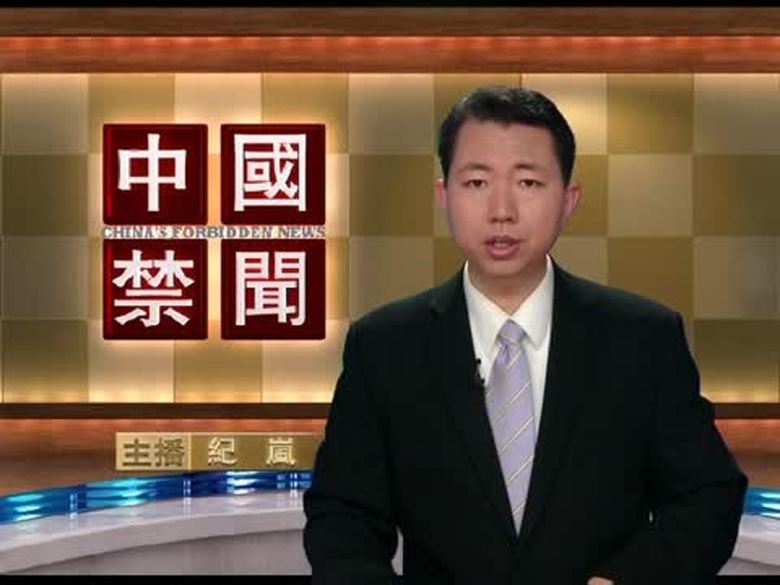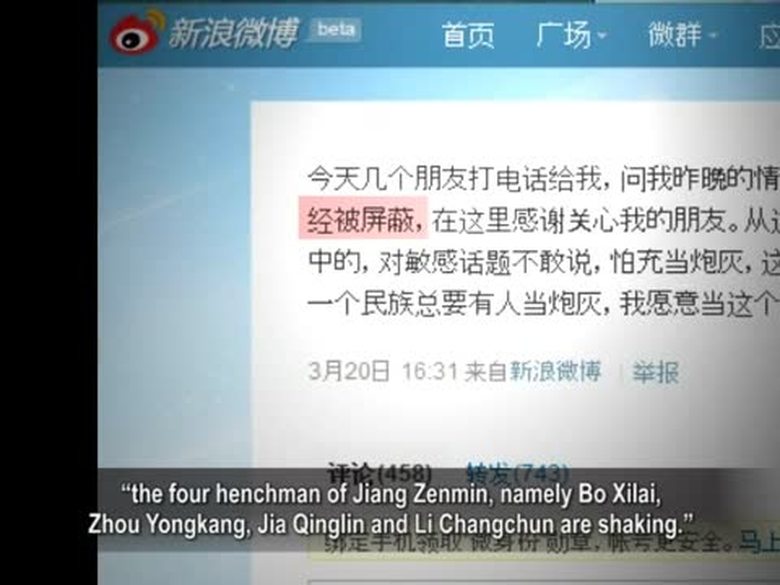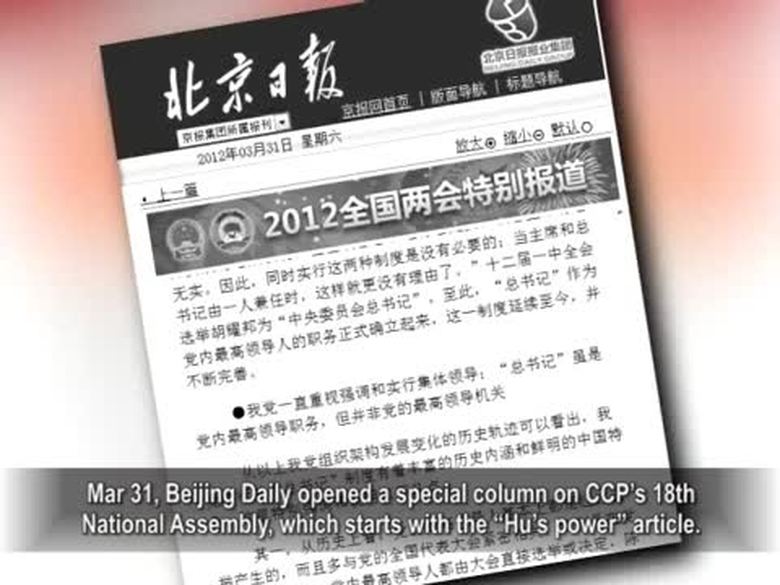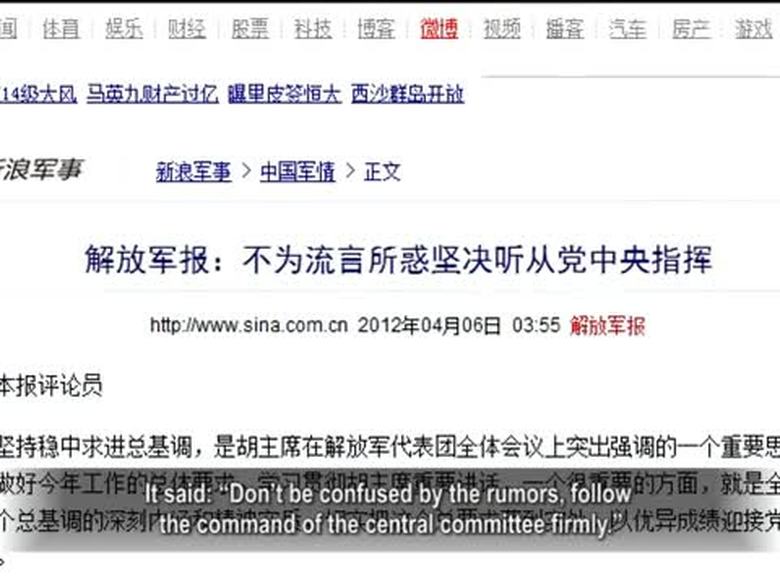【新唐人2012年4月4日訊】4月2號,大陸官媒轉載地方媒體的報導說,3月官方製造業採購經理指數(PMI)連續第四個月回升, 而民間的匯豐PMI數值卻連續四個月下滑,因此,不宜對官方PMI數據過分樂觀,中國經濟增長速度實際上正在走下滑路。專家指出,中國官方造假已經司空見慣,但是通過官方媒體曝光,說明目前的政治地震,給中國經濟數據的透明程度,帶來了一點縫隙。
2號《新華網》轉載《廣州日報》的報導,標題是:「官方民間PMI數據再現分歧,連續四個月背道而馳」。
《廣州日報》的這篇報導說,「中國物流與採購聯合會」和國家統計局「服務業調查中心」發佈的3月份「中國製造業採購經理指數」(PMI)為53.1%,比2月上升2.1個百分點,連續四個月回升。但昨天公布的匯豐3月份中國製造業採購經理人指數,為48.3%,仍低於2月份的49.6%,實際上民間PMI已是連續四個月下降。
美國「南卡羅萊納州大學」教授謝田認為,中共這次的政治大地震,開始打破中共對新聞和數據的壟斷。
謝田:「中宣部看來是控制無力了。這實際上是民間的專業團體和地方性的報紙一步步在揭穿中共在經濟上的謊言,中共為甚麼要用這種過分樂觀和虛假的數字公布於眾呢,他是要顯示出來中國的經濟有多麼多麼的輝煌,實際我們也都知道中國的經濟在走下坡路。」
據《廣州日報》這篇報導分析,民間與官方PMI走勢相反的原因之一是,匯豐調查的樣本主要是中小企業,而官方的調查則是選取大型企業。這樣就導致調查結果完全相反,同時也說明瞭中國大型企業和中小企業「冰火兩重天」的生存現狀。
中國金融智庫研究員鞏勝利表示,中國官方數據的統計和世界其他國家採取的是不同的標準,再加上中國的經濟數據是地方官員陞遷的依據,含有大量的水分, 所以用官方數據來衡量中國的經濟是沒有意義的。
鞏勝利:「你比如說,中國的消費指數和失業人數,它都是中國的特色,它有很多都不包括在內,中國的失業人數,你像美國它是所有的人都包括,中國它只包括城鎮居民,不包括農民,你想中國80%的農村人口都不包括在內,它這失業人數還有甚麼可使用的價值。」
「浙江大學」商學研究院院長李志文告訴《新唐人》,因為中國是屬於官本位,經濟的數據往往根據上面的需要而作假,而國外的統計沒有作假的需要。
李志文:「中國數據跟外國數據永遠不一樣,因為統計口不一樣,統計口不一樣呢,它收到資料不一樣,還有它那個度量方法不一樣,只有到有一天,就像美國一樣的完全打開了,它才有一個統一統計口徑。統計口徑不一樣其實對國家是相當不好的,就給下面的官員貪污的機會。」
統計數據顯示,中國的PMI指數已經連續5個月低於50榮枯線以下。據了解,50通常被業界認為是PMI指數的「分水嶺」,PMI指數高於50,說明製造業整體運行情況良好﹔PMI指數低於50,則表明製造業整體呈現下滑趨勢。因此專家們警告大眾,對中國官方的統計數字不宜樂觀。
=================
Doubts Raised over China's Official PMI Data
On April 2, China's official PMI data is reported
to have rebounded for the fourth month in a row.
Yet the HSBC China PMI index showed a decline during
four consecutive months.
Because of this, the public are warned not to be
overly optimistic about China's official PMI data figures.
China's economic growth rate is actually moving in
a downward trend.
Experts note that the fabrication of China's official statistics
has now become commonplace.
But the fraudulent data exposed by official media indicates
that China's recent political earthquake has created a chink.
Thus, show a little bit of transparency in economic data
released in China.
An article in Guangzhou Daily has been published
on Xinhuanet.com on April 2, titled:
"Official PMI Index Running Counter to Civil PMI Index
over Four Consecutive Months.”
The latest data released by the China Federation of Logistics
and Purchasing and the National Statistics Bureau shows that
China's March PMI data was 53.1%, showing a rise of
2.1% over figures for February.
It was reportedly the fourth consecutive month of rebounding.
In contrast, the HSBC China PMI index in March,
was 48.3%, that being below February's 49.6%.
HSBC's figure showed a declining trend for the
fourth month in a row.
Frank Tian Xie, professor at Univ. of South Carolina, thinks
that the political earthquake impacting China has begun to
break the hold of the Chinese Communist Party's
monopoly on news reports and data release.
Frank Tian Xie: "The Central Propaganda Department
appears to have weakened in it's control mechanism.
This actually shows that non-governmental professional bodies
and regional newspapers are gradually exposing the CCP's economic lies.
Why does the CCP release such overly optimistic and
false figures to the general public?
The intention behind this is clearly to present the image
of a healthy Chinese economy.
But in fact, we all know that China has begun
an economic decline.”
The article in Guangzhou Daily has explained why
the civil PMI data doesn't tally with the official one.
One of the reasons is reportedly attributed to HSBC's
survey samples, which were mainly taken from small and medium-sized enterprises.
While the official investigation was said to have been
conducted on collecting figures from large enterprises.
This is given as the reason for conflicting data results.
The article states that this also shows a status quo of
assisted survival of large enterprises and small and medium enterprises in China.
Gong Shengli, China's financial think-tank researcher, says
that China's official statistics follow a different standard to that followed in other countries.
Moreover, China's economic data provides a basis for
the promotion of regional officials, and is full of dubious information.
Therefore it makes no sense using the official data
to evaluate the state of China's economy, Gong comments.
Gong Shengli: "For example, China's consumer price index
and unemployment figures are both falsely presented as China's features.
Although a lot of factors have never been included in the data.
The unemployment figure in the U.S. includes all jobless people.
But in China, the figure only refers to unemployed urban
residents, and does not cover jobless farmers.
The rural population in China accounts for 80% of the total.
You could ask how can the state's unemployment data
have any real value when it doesn't include this large part of the population.”
Li Zhiwen, the School of Business Director at Zhejiang
University, tells us that China's official economic data is often fraudulent.
Because the data is made up by the requirements of
superiors and officials of the CCP regime.
In contrast, western countries have no such needs to
fabricate official statistics, says Li.
Li Zhiwen continues: "China's data can never be the same
like any other countries, due to its different statistical caliber.
The different information is used for compiling statistics.
As well as the measuring method is also not the same.
Only if everything in China becomes transparent, and with
the same statistics methods used in the U.S.,
then a unified statistical caliber can be formed.
Currently, the adoption of a non-uniform statistical caliber
creates opportunities for official corruption."
Wind Info's statistics show that China's PMI index has fallen
to below 50 points for the fifth month in a row.
A PMI reading above 50 generally indicates better
conditions in the manufacturing sector.
PMI index below 50 indicates that the sector is
generally declining.
This is why, experts warn the public not to be
optimistic about China's official statistics.
看下一集

【禁聞】 西藏局勢持續惡化 籲國際社會關注

【禁言博客】對“家事”我們都是看客

【禁聞】微博解禁日 新浪開放「活摘器官」

【禁聞】徐明被控 紅頂商人顯危機

【禁聞】溫家寶要打破銀行壟斷 中共真捨?

【禁聞】敏感時期 陸媒清明祭胡耀邦引聯想

【禁聞】德媒:中共正進行一場神秘鬥爭

【禁聞】重開微博評論 中共嚴打依舊

【禁言博客】中國寒門改變命運的十條捷徑

【中國禁聞】美大使住不起五星酒店

【禁聞】《北京日報》質疑「總書記」權威

【禁聞】訪民衝破黑牢 祭楊佳被關押

【禁聞】重慶貨車私運軍火 官方說辭矛盾

【禁聞】堅持抗爭 內蒙牧民拒絕條件交換

【禁聞】軍隊再表忠 大員輪番表態挺胡棄江

【禁聞】中共特色 部委食堂一元錢午餐








